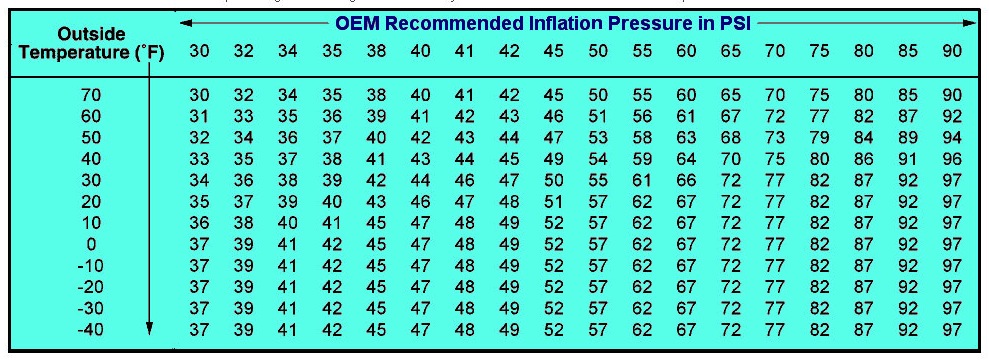- October 24, 2022
- By Bobbie Hicks
- In Uncategorized
- Tags doylestown, pressure, tire pressure, Tires
- 1711
- 0
The air inside your tires is impacted by temperature. When the temperatures are high, the pressure increases and when the temperatures lower, the pressure reduces. That said, the tires aren’t necessarily the thing that supports your vehicle’s weight; it is the air inside them. Typically, the tire pressure is kept at about 32 PSI. So, did your tire pressure light come on recently? As long as you haven’t hit anything or picked up a sharp object with your tire, it could be due to the colder weather. The colder air makes the air molecules in the tire condense, causing lower pressure. After driving for a while, your tire heats up, and that could make your tire pressure light go off. In the cooler weather, we recommend bumping up your tire pressure about 3-4 PSI more than what is recommended for your vehicle. That should help with your tire pressure light!
● Leakage, including natural or puncture leakage
● Exposure to the sun
● Tire temperature
● Ambient temperature
Car manufacturers recommend the most suitable pressure for your car tires, which is the one normally shown on a plate attached to the driver’s door jamb. This pressure is associated with the size and type of tire, as well as the vehicle’s weight. It is known as the cold inflation pressure, the pressure to utilize when filling the tire with air when it’s cold. The tire pressure fluctuates when using your car throughout the day.
When the weather is cool, it reduces tire pressure compared to warm weather. Less pressure surges the tire surface area that touches the road, which surges fuel consumption. Again, reduced pressure makes the tires` sidewalls more malleable and sacrifices grip. Furthermore, it means that your car tires will deform because of the car’s weight, leading to heat accumulation in the rubber and decreasing lifespan. Every time the temperature decreases by one degree, the tire pressure decreases by about 0.19 PSI.

As the car tires deform as you drive, it develops resistance. Some of this resistance is converted into heat, which expands the air inside the tires and surges the pressure by approximately 1 PSI every 300 seconds up to a max of about 4 to 5 PSI. It would help if you checked and modified the tire pressure after leaving your car sitting in the parking lot or anywhere else for a few hours. When it is rainy, it can partially alleviate this since driving on wet roads disintegrates the heat.
This effect of the sun on tire pressure can make a difference of up to 15%. Tires absorb heat, which passes on to the air in the tires.
You’ll want to check the tires` pressure monthly, which will be handy in adjusting it depending on the temperature.
Checking the air pressure in your tires and inflating them is easy, though it would help if you had the right tools. To check tire pressure, you’ll require a reliable pressure gauge. Contrast the pressure in the tires to the one recommended by the manufacturer and inflate them accordingly utilizing a compressor. If you would like assistance in checking your tire pressure or would like for us to show you how, contact the office at 215-345-8620. We are happy to help.